First Published: 9 Jul 2022How To Control Food Costs In Restaurants
How to control food costs in restaurants has to be at the forefront of any restaurant manager’s mind. The result can benefit your business if you can control your food costs effectively. When managing restaurants, reducing food costs is one of the most important tasks you can accomplish daily.
The first step to control food costs in restaurants is to monitor your stock diligently, which means taking daily and weekly inventory of your most expensive ingredients. By tracking the amount of food you serve, you can determine the ideal cost of each dish. Once you know this, you can adjust to ensure you pay the appropriate amount.
It is also important to have a good inventory management system in place so you can monitor how much of each dish you need to buy and what your margin is.
One of the best ways to control food costs in restaurant management is to eliminate unnecessary ingredients and portions. Consider using automated menu-generating software, which integrates with ePOS and provides comprehensive analysis.
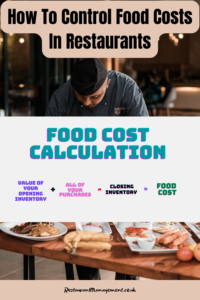

How to Reduce Food Costs
Controlling food costs in restaurants is crucial to managing finances while maintaining quality. One effective strategy is optimizing inventory management by conducting regular audits and tracking ingredient usage. By identifying trends and adjusting ordering quantities accordingly, restaurants can minimize waste and prevent overstocking.
Creating a streamlined menu with versatile ingredients can help reduce food waste and simplify inventory management. Implementing portion control techniques ensures that each dish is cost-efficient without compromising portion sizes or customer satisfaction. Another key tactic is fostering supplier relationships to negotiate better prices and explore alternative sourcing options for cost-effective ingredients.
Furthermore, staff training on properly handling and storing perishable items can extend shelf life and prevent spoilage. Lastly, embracing technology such as inventory management software can provide real-time insights and streamline monitoring food costs, ultimately contributing to increased profitability and sustainability in the restaurant industry.
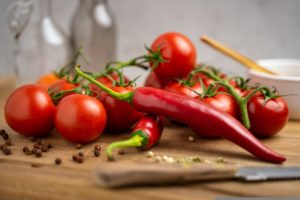
Food Cost Calculation
Understanding the true cost of food goes beyond the simple percentage calculation. The difference between the actual and theoretical costs allows you to make significant changes in food costs. The former is based on the current price of all ingredients. The latter, on the other hand, reflects how much your restaurant spends on ingredients. The difference accounts for mistakes such as inconsistent portion sizes, improper invoicing, employee theft, and kitchen waste.
When making a food cost estimate, it’s best to estimate how much each ingredient and menu item will cost. A target range of 15-30% is ideal and results in 70-85% gross revenue per item. This method will minimize your restaurant’s costs and maximize profits. By tracking your food costs, you’ll be able to determine exactly where the most money is being spent and set thresholds to help you stay ahead of the competition.
Causes and Solutions for COS:
Delivery Shortages - Checking deliveries properly against what you've ordered.
Accurate inventory counts to identify any shortages
Over-ordering - Over-ordering will cause difficulties in inventory counts as well as day-to-day control of stock. If you've got too much stock it is harder to accurately track consumption
Waste due to pilferage - Daily, weekly inventory count to mitigate losses and keep control of stocks
Inaccurate product projection - Project and forecast properly using all systems at your disposal. Just in time with a day or two buffer will normally suffice.
Losses due to theft and petty theft - Eradicate theft by a daily critical count of selected products as well as your high-risk, high-value items.
Guest Check capture - being vigilant to ensure that bills are being processed correctly.
By tracking traffic and purchasing food in bulk, you can reduce food costs in your restaurant. By controlling the amount of wasted food, you can also eliminate waste and increase profitability.
The most important aspect of controlling food costs in restaurants is to monitor the number of meals you serve each day. Having a high number of meals will allow you to make adjustments to the menu and avoid wasting money. The food portion you serve should be proportionate to the number of people that you are serving.
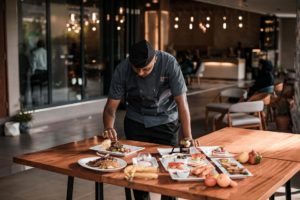
How to Calculate Your Food Costs Using A Food Cost Formula
To run a successful restaurant, it is essential to know how to calculate your food costs. This is because they account for a substantial portion of your Gross Operating Profit (G.O.P.). You may not realize it, but your food cost can be as high as 35% of your turnover. Moreover, every 1% reduction in your food cost can increase your profit by as much as 58%. To make your calculations easier, here are some tips:
To calculate your food cost you need to first determine the value of your initial inventory, then add up all of your purchases, and then subtract it from your final inventory. The total amount that you spend on food throughout the full week can be calculated using this method.
This is your food cost percentage. Now, you can use it to analyze your expenses and boost your profits. You can apply this formula to any business to keep an eye on its costs.
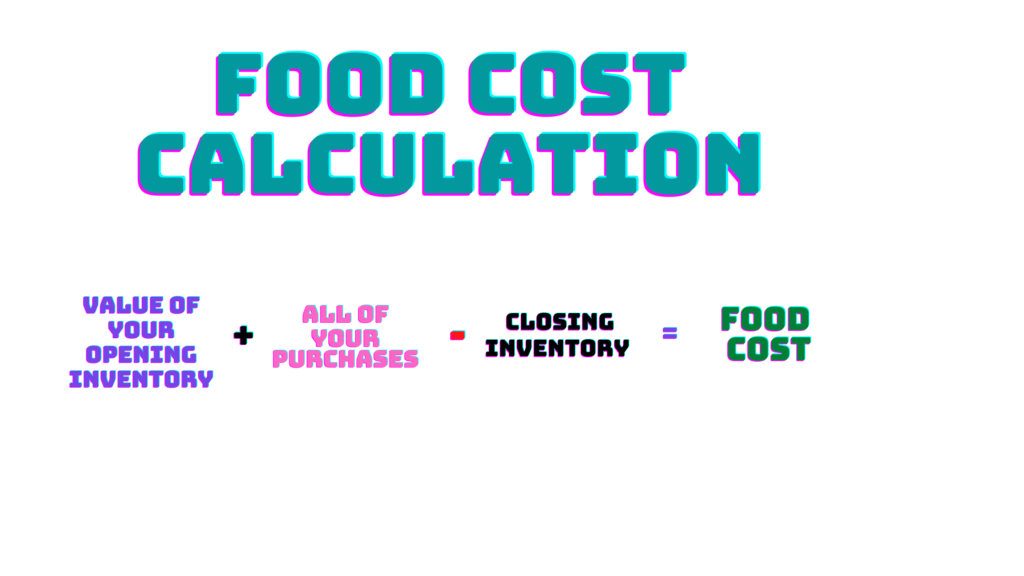
Controlling Food Costs In Restaurant
To control your food cost, you should know your sales and profit margins. By knowing your prime costs, you can set a target price for your products. To control your costs, you must ensure that your sales are profitable. Luckily, it isn’t hard to figure out your prime cost formula.
Related articles:
How To Improve Restaurant Profits
Restaurant Management Structure
Food Cost Control Formula
The food cost formula can be used to determine your food costs. Using this to make your menu more efficient and affordable is essential and valuable for restaurant owners looking to cut food costs. You can even use a ready-made Food Cost Calculator to calculate the costs of your menu items. So, what are you waiting for? Get started today!
What Is The Formula For Food Cost Percentage?
To get the food cost percentage, divide the total cost of goods sold by the total sales or income earned by the finished dish.
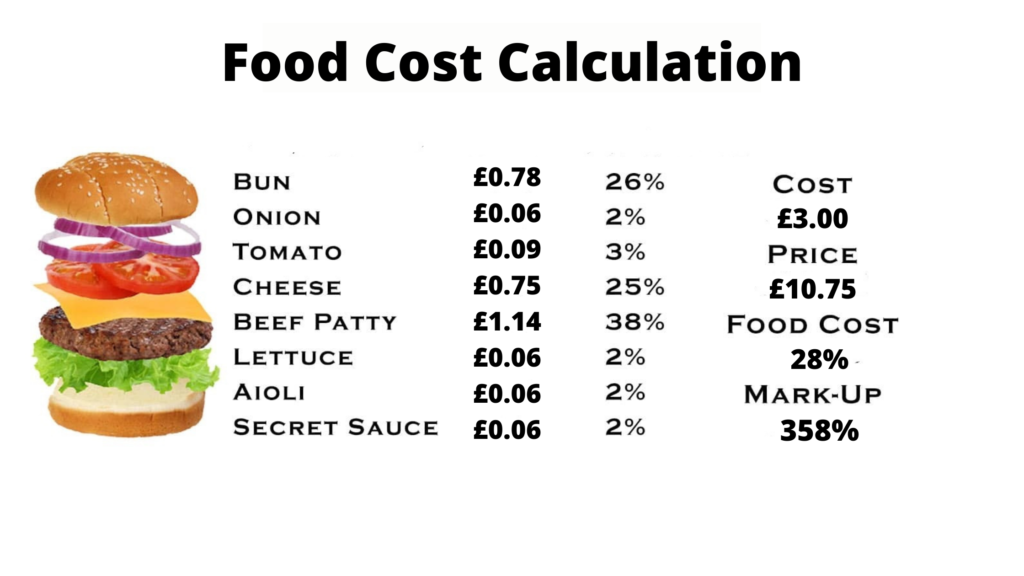
How to Calculate Food Cost?
- Divide each dish into its parts.
- Determine the price of each dish.
- Calculate your fixed expense per meal served.
- Determine what portion of your menu’s cost is made up of food.
- Establish your desired food cost.
The food cost formula can help you determine how to price your menu. By using this formula, you can determine how much your ingredients cost compared to your total revenue. This will help you decide whether to continue buying certain ingredients or to cut back on them.
Eventually, this will help you set your budget. To know how to control your inventory, you should learn how to calculate the food cost ratio. If you have a large menu, you should also consider the percentage of your customers who are repeat customers.
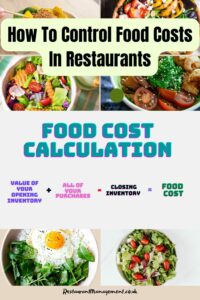
What Are The Advantages Of Using Menu Engineering?
Menu engineering is a process by which a restaurant can analyse its price and layout to improve profitability. Each item on the menu is assigned to one of four menu engineering categories according to its potential for profit and customer demand.
The 4 Types of Menu Engineering are:
- Extremely Successful and Popular menu items.
- These menu items consistently generate a lot of money and attention for you. Your guests will go crazy about these, and you won’t have to break the bank making them.
- Keep these items on the menu as they are and advertise them as much as possible instead of tinkering with them. Put them where everyone can see them on the menu.
- High profits but not very popular
- These are the most lucrative yet least popular items on your menu.
- If things aren’t selling, figure out why they aren’t. Perhaps they need to be promoted more or described more clearly. Should you increase social media advertising or reduce the asking price? Could a modest price cut boost sales and, in turn, earnings?
- Low profitability and high popularity
- These dishes tend to have more pricey ingredients. The goal of working with these dishes is to maximise their financial return.
- How? Reworking the recipe to make it a more lucrative version of the same item or pairing the item with a drink as a bundle to increase sales.
- Use portion control. How often do diners abandon their partially consumed meals? Reducing the serving size while maintaining or improving the dish’s current visual appeal might be the answer.
- Consistently low profits and popularity
- In terms of profitability and customer satisfaction, your most expensive and least popular menu item can generate low profitability.
- Remove them from your menu as they prevent you from offering more lucrative options to your customers. You can choose to not include them in your menu or even hide them from view on the menu. Before completely getting rid of something, you can also consider repositioning it in the market.
What is the purpose of menu engineering?
Using menu engineering and other cutting-edge tools can help you keep costs down while delivering a superior customer experience. Menu engineering will streamline prepping, procurement, and inventory processes, as well as food waste and improve quality.
Moreover, menu engineering will help you manage the amount of the various dishes on your menu which will help in reducing your overall cost of food.
Menu engineering ensures that your menu is designed to meet the needs of the target market. It is possible to find new ways to cut the overall food cost in your business by following these simple steps.
Restaurant Menu Pricing Strategies: How to Maximize Profits with Ideal Food Cost
Conclusion
The formula to control food costs in restaurants can help you set menu prices and ensure that no food is wasted. You can also determine the percentage of food costs by summing the total number of items and their respective amounts at the start of the week.
The food cost percentage can determine the cost of a particular meal, which is accomplished by converting the total cost of all the ingredients to the price of a single meal.
This method can be used to calculate food expenses by examining the overall cost of the materials for one dish. You can also compare the prices of other items to figure out the average cost per serving. The percentage of food expenditures can also be used to estimate the entire expense of various meals.
The food cost percentage can be calculated by adding the total cost of your ingredients and the total sales of each item. It would help if you also considered the per-item profit margin.
The food cost percentage is one of the most critical metrics to consider. This metric is essential for restaurant managers because it can tell you whether you’re making enough money from a particular dish.
Frequently Asked Questions And Answers
How can we control food costs?
To control food costs in restaurants include optimising inventory management, monitoring portion sizes, negotiating with suppliers for better prices, and training staff on proper handling and storage techniques.
How can we reduce food expenses?
Reduce food expenses by minimising waste through inventory tracking, implementing portion control, negotiating with suppliers, simplifying the menu, and training staff on efficient practices.
What are the eight-step approaches to controlling food costs?
The eight-step approach to controlling food costs includes:
- inventory management,
- menu engineering,
- portion control,
- purchasing practices,
- supplier relationships,
- staff training,
- waste reduction, and
- utilising technology.
How do you balance food costs?
Balance food costs by analysing sales data, adjusting menu prices, monitoring inventory levels, negotiating with suppliers for competitive pricing, optimising portion sizes, and implementing cost-saving measures without compromising quality or customer satisfaction.
Restaurant Food Waste Management Challenge That Will Change Your Restaurant

